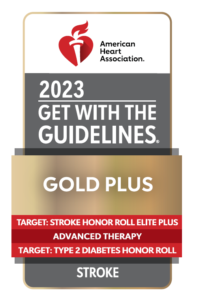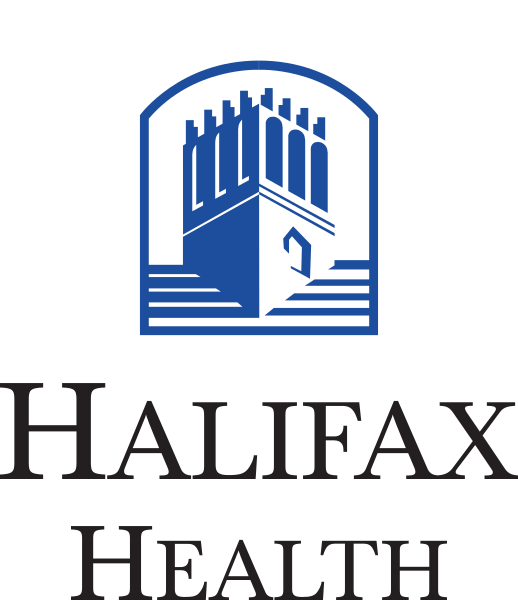
Our greatest reward is caring for our patients. That’s why we’re committed to turning treatment guidelines into lifelines.
As a Thrombectomy-Capable Stroke Center, Halifax Health is the proud recipient of the Get With The Guidelines Gold Plus Achievement Award which means that we have once again reached an aggressive goal of treating stroke patients with 85 percent or higher compliance to core standard levels of care as outlined by the American Heart Association/American Stroke Association for 24 consecutive months. In addition, those hospitals have demonstrated 75 percent compliance to seven out of ten stroke quality measures during the 12-month period.
Get With The Guidelines® puts the unparalleled expertise of the American Heart Association and American Stroke Association to work for hospitals nationwide, helping hospital care teams ensure the care provided to patients is aligned with the latest research-based guidelines based on the latest scientific evidence. Developed with the goal to save lives and hasten recovery, Get With The Guidelines programs have touched the lives of more than 6 million patients since 2001.
Most hospitals that implement Get With The Guidelines® realize measurable results, including improved patient outcomes and fewer recurring events. It’s a difference that shows in the lives of patients and their families and in the satisfaction felt by caregivers empowered to do their best.
In Addition
Halifax Health additionally received the association’s Target: StrokeSM Honor Roll Elite with Advanced Therapy award. To qualify for this recognition, hospitals must achieve Door to Needle and Door to Device in 90 minutes or less in 50% of patients arriving directly, and Door to Needle and Door to Device in 60 minutes or less in 50% of transfer patients to improve quality of patient care and outcomes.
We were also awarded the association's Target: Type 2 Diabetes Honor Roll. To qualify for this recognition, hospitals must qualify for the Silver level or higher achievement award in Get With The Guidelines- Stroke and achieve an overall diabetes cardiovascular initiative composite score of 80% or greater.
According to the American Heart Association/American Stroke Association, stroke is the No. 5 cause of death and a leading cause of adult disability in the United States. On average, someone in the U.S. suffers a stroke every 40 seconds and nearly 795,000 people suffer a new or recurrent stroke each year.
To read more about this award, visit the link: Get With The Guidelines Stroke Awards 2022 | Halifax Health


